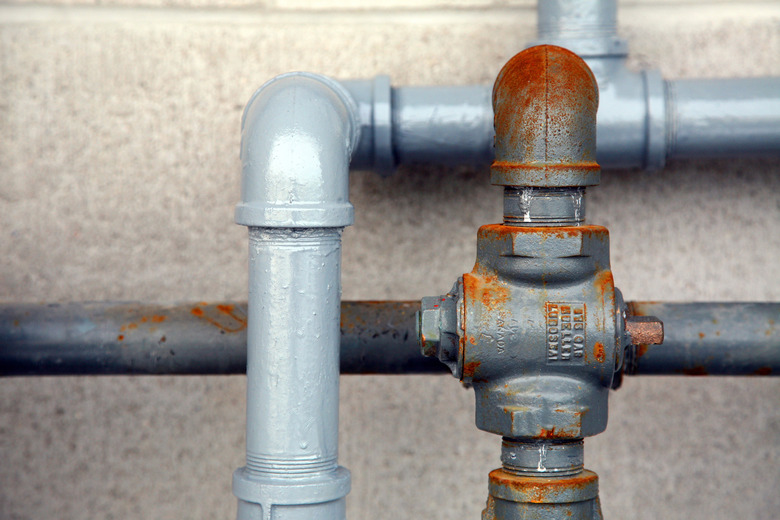What Happens When A Pipe Bursts In Your House?
We may receive a commission on purchases made from links.
Pipes can burst for a variety of reasons, including freezing cold temperatures, damage to the pipe or too much pressure. A burst water pipe in your home will cause damage eventually, depending on the location and severity of the pipe damage. Major pipe damage can flood your home and leave behind all sorts of damage. Whether large or small, a burst pipe and resulting water can damage your walls, floors, ceilings or belongings until the water is shut off and drained from flooded areas.
Tip
Burst pipes cause water to flow into your home, which can lead to flooding and damage to floors, ceilings, walls, wiring and other structural components. The moisture can cause mold growth if it's not cleaned up properly.
Damage to Walls
Damage to Walls
A burst pipe, whether it's just a leak or major breakage of a pipe, first creates water damage in interior and exterior walls. Inside the wall, insulation may grow saturated with water. Electrical wiring exposed to water may short out electricity and increase the risk of fire caused by sparks.
Exterior house walls may be affected as water coats and saturates plaster, wood or stucco. If water accumulates or saturates timbers and structural components for a long period, structural weakness may occur.
Damage to Ceilings
Damage to Ceilings
If a pipe on the second floor bursts, the water often soaks down through the floor and into the ceiling of your first floor rooms. If there's enough water, it can pour through the ceiling and flood lower rooms. The water can damage light fixtures and wiring, support beams and insulation that's in the ceiling.
Damage to Flooring
Damage to Flooring
Following a burst pipe, floors in the surrounding area may become flooded, depending on the location and rate of flow of water leaking or gushing out of the burst pipe. Carpeting, wood flooring and even cement floors may become damaged by water. Wood and linoleum floors warp and crack and carpeting turns moldy and smelly. Cement floors exposed to long-term water damage may crack or settle.
Damage to Interiors
Damage to Interiors
A burst pipe may cause the accumulation of water in your bathroom, bedroom, kitchen or other living areas, saturating the bottom of furniture. Water soaks into the lower edges of furniture fabric and may destroy upholstery several inches or higher in such pieces of furniture. Electrical outlets may short out, as will plugs attached to lamps, televisions and other indoor appliances.
Dangerous Mold Growth
Dangerous Mold Growth
Even if water damage is minimal, damp drywall and wood is a breeding ground for many types of molds, which may lead to illness, especially for those with lung or asthma conditions. Catching the leak as early as possible and drying up the water quickly helps prevent mold growth. Use a wet/dry vacuum to suck up as much moisture as possible. Opening windows and using industrial fans also helps dry out the space
Preventing Burst Pipes
Preventing Burst Pipes
Homeowners living in colder climes should always turn off well pumps that serve the furnace when a house is vacant, even for a short while. When leaving for vacation, turn off the water to the house if possible. If you have an active pipe leak and can hear water running, even if you can't see it, turn off the main water valve to the home. This may help reduce water damage until the utility company or repair person can come repair the burst pipe. When vacationing or leaving a house for more than a few days, ask a neighbor or friend to come check on the house.
